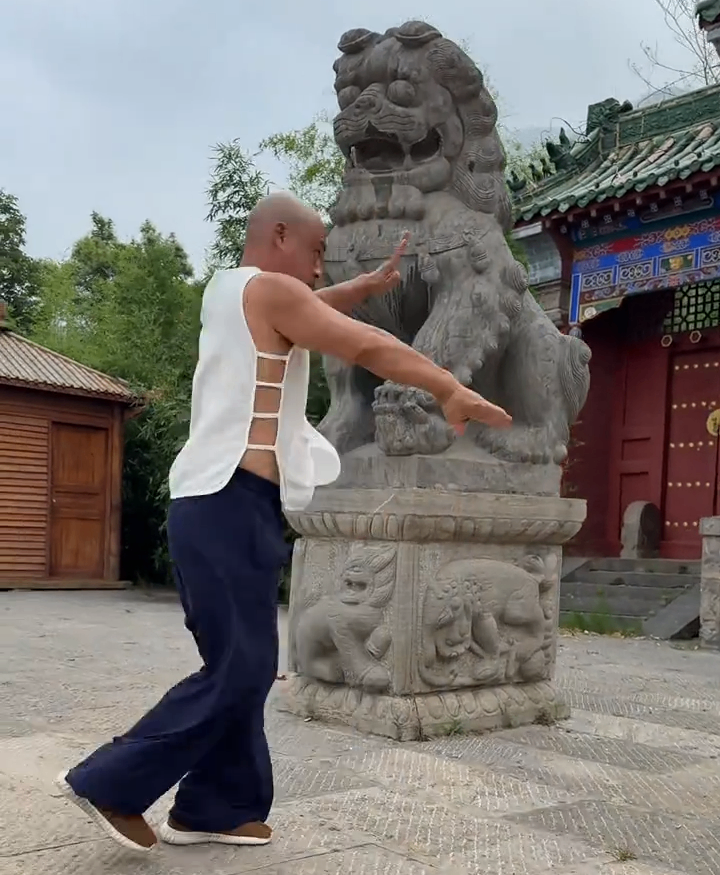I. Whispers from the Temple Walls: The Legendary Origins of Luohan Quan
The history of Luohan Quan is woven into the very fabric of Shaolin's creation myth. Legend credits its foundation to none other than Bodhidharma (Da Mo) , the enigmatic Indian monk who brought Chan Buddhism (Zen) to China in the 5th or 6th century AD. Observing the monks weakened by prolonged meditation and lacking physical resilience, Bodhidharma is said to have developed a series of exercises. These exercises, designed to strengthen the body and focus the mind for spiritual practice, formed the bedrock of Shaolin Kung Fu. Among these foundational practices, Luohan Quan is often revered as the oldest and most fundamental bare-hand form .
The name draws direct inspiration from the Luohan (Arhats) . In Buddhist tradition, Arhats represent enlightened disciples of the Buddha who have conquered delusion and attained spiritual liberation. They are depicted as figures of immense wisdom, serenity, and possessors of supernatural powers. Luohan Quan seeks to embody these qualities – the calm mind, the pure spirit, and the formidable, focused power that transcends ordinary human limitations.
Whether purely born of Bodhidharma's insight or evolving over centuries through the dedicated practice of generations of warrior monks, Luohan Quan became the cornerstone of Shaolin hand combat . It served as the essential training ground, the crucible where monks forged the physical discipline and mental fortitude required for both spiritual awakening and the defense of their sanctuary and principles. Its techniques formed the basis upon which countless other Shaolin styles were subsequently developed.
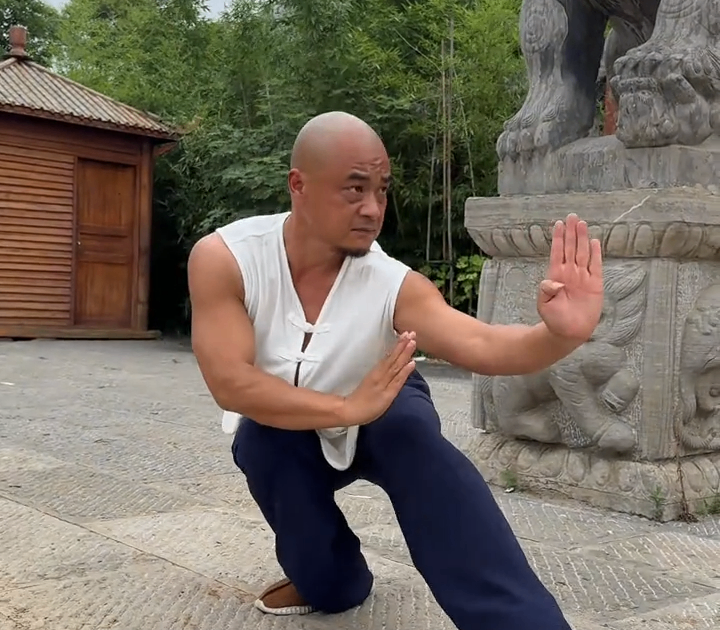
II. Embodiment of the Divine: Manifesting the Arhat Spirit Through Form
To observe a master perform traditional Luohan Quan is to witness something extraordinary. It transcends mere physical display; it is a ritualistic embodiment of sacred principles . The practitioner does not merely perform the form; they become the Arhat.
Majestic Presence & Solemnity (威严肃穆 - Wēiyán sùmù): Drawing deep internal focus, the practitioner's demeanor transforms. The face becomes calm, almost mask-like, reflecting the imperturbable mind of the enlightened Arhat. Eyes gaze forward with unwavering intensity, seeing yet unattached – the gaze of a divine guardian. Every movement is deliberate, imbued with gravity and purpose. There is no frivolity, no wasted motion. This is not a dance but a sacred enactment. It evokes the image of guardian deities carved in temple stone – immovable, eternally vigilant, radiating sacred authority . The sheer presence commands a profound respect and quiet awe, silencing the mundane world around the performance space.
The Power of the Sacred Ocean (刚劲雄浑 - Gāngjìn xiónghún): Beneath the serene surface flows a current of immense, controlled power. Luohan Quan techniques are renowned for their deceptive potency. Strikes (拳 - Quán) are delivered with shocking speed and penetrating force, often generated from deceptive short distances using coordinated whole-body movement. Blocks (格挡 - Gédǎng) are not mere deflections but powerful, intercepting actions designed to shatter an opponent's structure. Kicks, though sometimes appearing lower than spectacular flying maneuvers, are rooted, powerful, and devastatingly effective (low sweeps , stomps, thrusts). The power generation feels deep, resonant, and unstoppable – like the relentless surge of ocean waves or the sudden, terrifying force of a tsunami emerging from deep water . It is power rooted in perfect structure, precise alignment, breath control, and unwavering intent, mirroring the unyielding nature of the Arhats themselves.
Zen in Motion: The Fluid Connection (禅韵 - Chán yùn): The true genius of Luohan Quan lies in the seamless fusion of apparent opposites. The solemnity and the explosive power coexist in perfect harmony. Transitions between techniques are fluid and circular, embodying the Daoist principles of Yin and Yang – soft yielding to hard, expansion flowing into contraction. Breathing (调息 - Tiáo xī) is deep, diaphragmatic, synchronized perfectly with each movement, anchoring the practitioner firmly in the present moment. This creates a mesmerizing rhythm, a moving meditation that focuses the mind as intensely as it strengthens the body. The practice itself becomes Zen meditation manifested through dynamic form – cultivating mindfulness, inner stillness, and unwavering concentration amidst controlled physical expression.
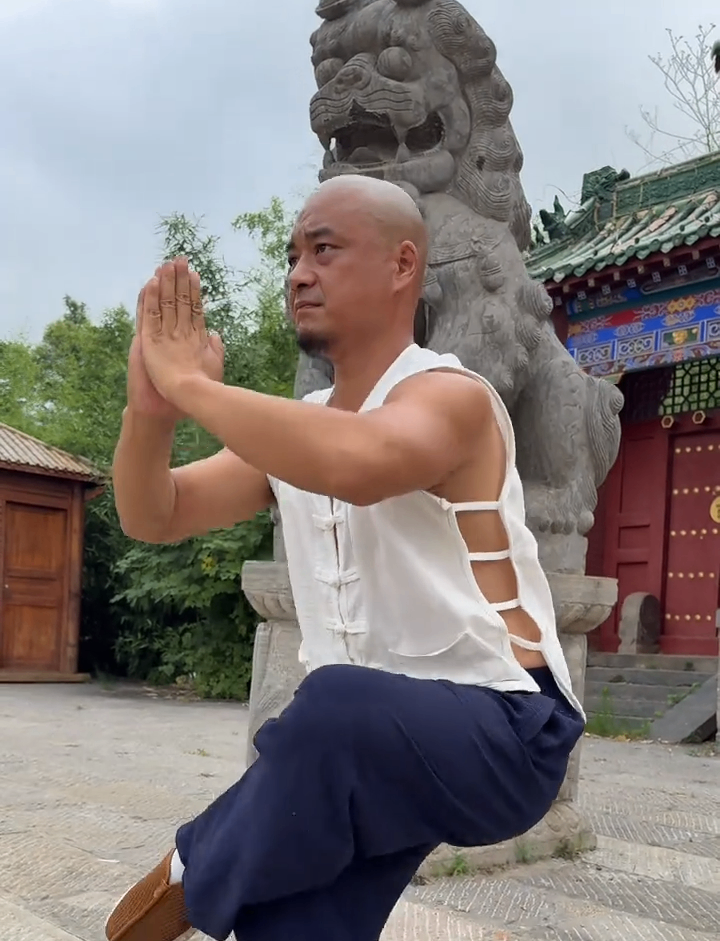
III. The Arhat's Arsenal: Decoding the Techniques of Luohan Quan
Luohan Quan is characterized by its practicality, directness, and efficient power generation. While variations exist (such as the famous 18 Luohan Hands and the longer 108 Luohan Quan ), core principles define its technical repertoire:
Stances (步法 - Bùfǎ): Foundational Stability: Luohan Quan utilizes deep, stable stances providing an immovable base for generating power and resisting force. Key examples include:
Mabu (马步 - Horse Stance): A wide, deep stance providing immense stability and leg strength. It embodies the grounded power of the Arhat.
Gongbu (弓步 - Bow Stance): A forward-leaning stance facilitating powerful linear attacks (punches, palm strikes) and forward drives.
Xubu (虚步 - Empty Stance): A seemingly lightweight stance, often back-weighted, used for swift evasions, transitions, and deceptive kicks. Represents readiness and adaptability.
Pubu (仆步 - Crouch Stance/Drop Stance): A dramatically low stance used for evasion, sweeping, and generating power upwards. Symbolizes the Arhat's connection to the earth.
Hand Techniques (手法 - Shǒufǎ): The Core Expression: Luohan Quan employs a diverse arsenal of hand strikes, blocks, and controls, characterized by direct lines and short, explosive power.
Ge (格 - Block/Intercept): Powerful forearm blocks (Shang Ge, Xia Ge ) shunting attacks offline.
Lan (拦 - To Obstruct): Techniques that cut off or obstruct an opponent's advance or strike.
Qin Na (擒拿 - Seize and Control): Joint locks and trapping integrated throughout, often following a block or strike.
Trapping & Sensitivity: While not as elaborately developed as Wing Chun's Chi Sau , Luohan Quan contains elements of controlling an opponent's limbs at close range after initial contact.
Quan (拳 - Fist): Straight punches (Chongquan ), uppercuts (Zhaoquan ), hammer fists (Piguaquan ), and backfists (Fanbei Quan ).
Zhang (掌 - Palm): Thrusting palm strikes (Tui Zhang ), downward smashing palms (Pai Zhang ), slicing palms (Pi Zhang ). Palm strikes utilize different surfaces for various effects (knife-edge, heel, whole palm).
Gou (勾 - Hook): Used for deflecting, hooking limbs, and striking vital points.
Zhua (抓 - Grasp/Claw): Techniques for seizing, controlling, and tearing (Tiger Claw influence).
Strikes: Emphasize speed, penetration, and coordination. Key types:
Blocks & Controls: Designed to intercept, deflect, trap, or break. Key concepts:
Leg Techniques (腿法 - Tuǐfǎ): Rooted Power: Luohan Quan kicks are generally pragmatic and powerful, favoring lower targets for stability and maximum impact. Examples include:
Tantui (弹腿 - Springing Leg): A fast, snapping front kick targeting knees, groin, or midsection.
Cetui (侧腿 - Side Kick): A powerful thrust delivered sideways.
Dengtui (蹬腿 - Heel Thrust): A powerful push kick using the heel.
Sweeps & Stomps: Techniques to unbalance and damage the opponent's base (Saotui - sweeping leg) or strike downed opponents.
Power Generation (发力 - Fālì): Luohan Quan power is not merely muscular. It stems from:
Rooting: Deep connection to the ground through the stances.
Whole-Body Coordination: Power flows from the legs, through the waist/core rotation, amplified by the shoulders and arms – a kinetic chain.
Breath (气 - Qì): Explosive exhalations (Fa Jing ) timed precisely with the moment of impact, focusing intent and enhancing power.
Intent (意 - Yì): The focused mental projection of force into the target.
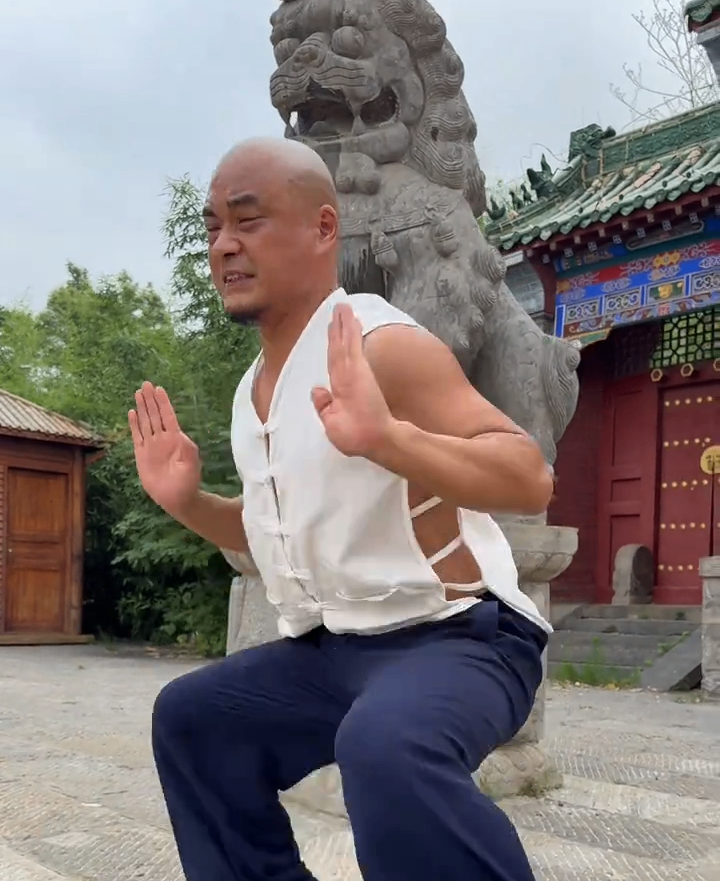
IV. The Inner Path: Cultivating Mind, Body, and Spirit Beyond Combat
Luohan Quan was never conceived purely as a tool for violence. For the Shaolin monks, it was integral to the holistic cultivation of the self , deeply intertwined with their Buddhist practice:
Physical Cultivation (修身 - Xiūshēn):
Strength & Conditioning: The demanding stances and powerful techniques build exceptional leg strength, core stability, and upper body power.
Flexibility & Mobility: Dynamic movements, deep stances, and kicks promote joint health and overall flexibility.
Endurance & Vitality: Practicing the forms builds cardiovascular stamina and enhances overall physical resilience, literally embodying the enduring spirit of the Arhats.
Coordination & Balance: The complex sequences demand and develop exceptional whole-body coordination and dynamic balance.
Mental Forging (修心 - Xiūxīn):
Concentration & Mindfulness (定 - Dìng): Performing the intricate sequences demands absolute focus. The mind must be fully present, coordinating breath, posture, and movement – a moving meditation that trains unwavering concentration.
Discipline & Perseverance (毅力 - Yìlì): Mastering Luohan Quan requires years of dedicated, repetitive practice. This cultivates immense self-discipline, patience, and the perseverance to overcome physical and mental obstacles – virtues central to the Arhat's path to enlightenment.
Emotional Control: The solemnity practiced teaches detachment and emotional regulation. The practitioner learns to maintain calm focus (He Xin - Harmonious Mind) even amidst the simulated chaos of combat within the form.
Spiritual Resonance (悟道 - Wùdào): This is the deepest dimension.
Embodying the Dharma: The form itself is a physical manifestation of Buddhist principles. The Arhat postures represent overcoming defilements. The power reflects the protective might of the Dharma. The fluidity embodies impermanence and non-attachment.
Integration of Zen: The focused mindfulness cultivated during practice is the essence of Chan. Luohan Quan becomes a vehicle for experiencing "moving Zen " – achieving meditative awareness through dynamic action, dissolving the barrier between physical practice and spiritual contemplation.
Cultivating Virtue (武德 - Wǔdé - Martial Virtue): True mastery is inseparable from ethical development. The power of Luohan Quan demands responsibility, humility, compassion, and restraint. It teaches that the highest skill is the ability to avoid conflict, in alignment with the Buddhist precept of non-harm.

V. Echoes Through Time: The Enduring Legacy and Modern Relevance of Luohan Quan
From its mythical origins with Bodhidharma to its codification within the Shaolin Temple walls, Luohan Quan has been the beating heart of Shaolin empty-hand combat for over 15 centuries. Its influence permeates countless subsequent Shaolin styles and has radiated outwards, impacting martial arts across China and beyond.
Today, Luohan Quan continues to thrive:
Within Shaolin Temple: It remains a core curriculum component, fiercely preserved and transmitted to new generations of monks as a vital link to their sacred heritage.
In Traditional Kung Fu Schools Worldwide: Authentic lineages teach Luohan Quan as a foundational system, respected for its depth, effectiveness, and connection to Shaolin's roots.
As a Cultural Treasure: It is recognized as a key element of Intangible Cultural Heritage , representing centuries of martial, spiritual, and philosophical development.
Its relevance endures because it offers more than fighting techniques:
A Path to Self-Mastery: It provides a rigorous system for physical fitness, mental clarity, and cultivating inner strength and discipline applicable to all aspects of life.
Practical Self-Defense: Its direct, powerful techniques, rooted in stability and efficient force, remain highly effective for real-world protection.
Living Philosophy: It offers a unique, embodied pathway to explore principles of Zen Buddhism, Daoism, and ethical conduct through dynamic movement.
Connection to History: Practicing Luohan Quan is a tangible connection to the ancient traditions of the Shaolin Temple and the wisdom of the Arhats.
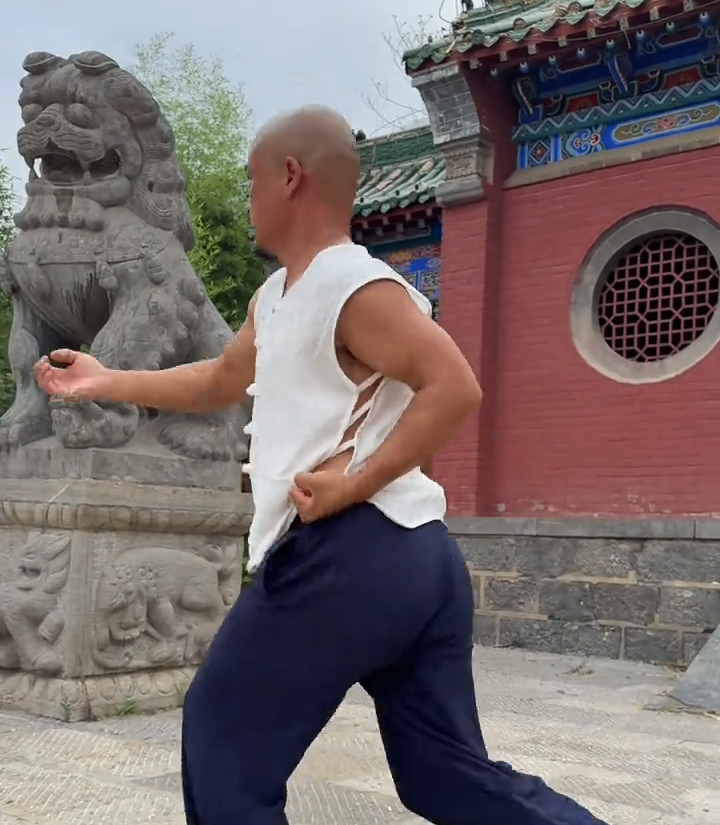
VI. Conclusion: The Eternal Dance of Spirit and Fist
Luohan Quan is far more than a sequence of combat techniques. It is a sacred vessel , carrying the weight of Shaolin's ancient wisdom. It is the embodiment of the Arhat spirit – serene yet formidable, disciplined yet fluid, rooted in the earth yet aspiring to enlightenment. To train Luohan Quan is to participate in a ritual passed down through countless generations of devoted monks. It is to engage in an eternal dance where spirit and fist become one .
The practitioner, moving with solemn grace and unleashed, ocean-deep power, becomes a conduit for the temple's enduring legacy. They stand as a modern guardian of this "mystical treasure of Shaolin martial lore ," a testament to the profound truth that the highest martial art transcends violence, becoming a moving prayer, a meditation in action, and a path towards realizing the indomitable, enlightened spirit of the Luohan within. In every precise stance, every focused gaze, every explosive manifestation of force tempered by Zen calm, the ancient resonance of the Shaolin temple lives on .
